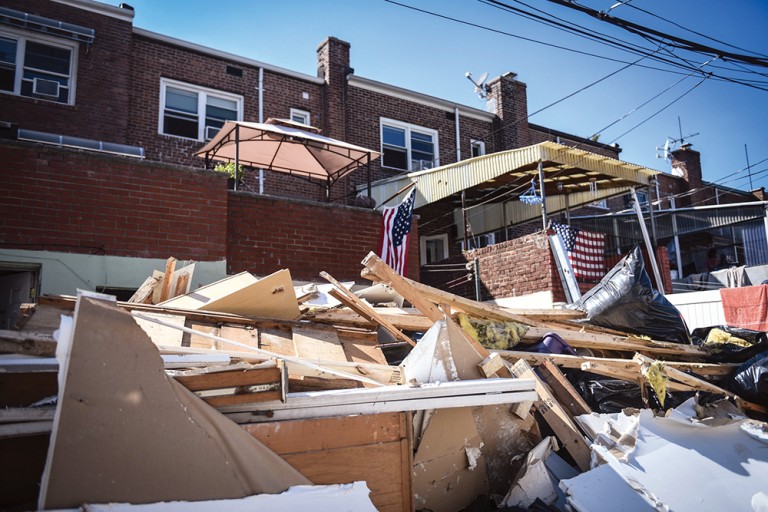By Michael V. Cusenza
As the twelfth anniversary of Superstorm Sandy nears, City Comptroller Brad Lander is once again chiding Mayor Eric Adams for what Lander has characterized as insufficient storm preparedness.
“New analysis from my office of key storm preparedness indicators shows that the Adams Administration has made inadequate progress. As of August 2024, the City is lagging on increasing enrollment in emergency notifications and replacing aging catch basins. Plus, 12 years after [Superstorm] Sandy, a significant portion of federal recovery funds have yet to be spent,” Lander, a 2025 mayoral candidate, said on Friday. “To weather the storms to come, we need stronger emergency weather management from City Hall. That is how public trust can be restored, systems improved, harm reduced, and lives spared.”
Earlier this year, Lander blasted the Adams administration for “big gaps in storm readiness” that were revealed by Tropical Storm Ophelia in 2023. A report by Lander’s Office identified what he called “several severe shortcomings,” including:
- 63 percent of the Department of Environmental Protection’s 51 catch basin cleaning trucks were out of service during the storm, leaving only 19 trucks to cover all five boroughs.
- At the time of the storm, Adams had not appointed an Extreme Weather Coordinator. The administration’s high-level and targeted communications with the public came late, well after heavy rain was already wreaking havoc.
- Only 2.7 percent of New Yorkers over 16 years old received NotifyNYC emergency alerts for the flash flooding.
- DEP has developed a cost-effective plan (just $22.5 million) to modernize many of the city’s priority catch basins so they are less likely to clog; but unfortunately, the plan has not yet been funded or greenlighted for implementation.
- A majority of DEP’s stormwater infrastructure projects are delayed and over-budget.
Lander said this year’s Atlantic hurricane season, which began on June 1 and runs through Nov. 30, is expected to be “abnormally active.” Storms, heavy rains, and intense hurricanes are becoming more frequent and severe with climate change. In June, Hurricane Beryl was the earliest category 5 storm on record. Hurricanes Helene and Milton made landfall this month, lashing the South with deadly winds and flooding.
In his hurricane season 2024 report on preparedness indicators, Lander wrote, “As the City gears up for what’s expected to be an abnormally active hurricane season, the Comptroller’s Office is monitoring key preparedness indicators through November 2024 to assess the City’s ongoing readiness for severe storms. City government has a crucial role to play in managing emergency response to severe storms and flooding, from communicating emergency alerts to cleaning catch basins to building more resilient infrastructure. It is critical that we pay sharp attention to these issues to ensure our city is as prepared as we can be for climate emergencies. Earlier this summer, the Comptroller’s Office requested data from the City on key preparedness indicators. Our goal to provide transparency to help ensure that New Yorkers are kept safe in the face of climate threats and disasters. As of August 2024, the City has made modest progress to increase enrollment in emergency notifications, replace aging catch basins, and spend all of the post-Sandy recovery and resiliency funds, but far more is needed to be fully prepared for heavy storms.”

